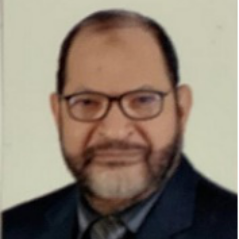
Mohamed T. Faheem Saidahmed
Work place: Computers and Automatic Control Dept., Faculty of Engineering, Tanta University, Tanta, Egypt
E-mail: Mohamed_ahmed1@f-eng.tanta.edu.eg
Website:
Research Interests: Computational Engineering, Computer systems and computational processes, Computational Learning Theory, Computer Networks, Process Control System, Engineering
Biography
Mohamed T F Saidahmed received the B.S. degree from Menofyia university (MU), Shebin El-Kom (SK), in June 1969, M.Sc. degree from Helwan university(UV) in May 1976, both in Egypt, and the D.Sc. Degree in System Science, Control and Networks from The George Washington University (GW), the School of Engineering and Applied Science (SEAS), Washington D.C., May 1983, USA. From1969 - 1977, he worked Demonstrator and Teaching Assistant in the Electrical Engineering (EE) dept., Faculty of Eng.(FE),MU, SK, Egypt. Toward Working for the D.Sc. Degree in USA, he worked Teaching Assistant from Fall 1979 to Spring 1983 at SEAS,GW,USA. From 1977 – Sep.1997, he has position of Assistant, Associate, and full Professor in the EE dept., FE, MU, SK, Egypt.
Since 1st October 1997, he has been full Professor in the Department of Computer Engineering and Automatic Control (CEAT) in FE,Tanta University (TU), Egypt, till now. From 1998 to 31st of July 2006, he was the Vice Dean and Dean of the FE , TU, Egypt. Since 2008, he spent his sabbatical leave in the EE Dept,Taif University,Taif,KSA. His research interests include singular systems, deep learning, AI, computer engineering, nonlinear and estimation of robust delayed singular control system.
Author Articles
Deep Learning Sign Language Recognition System Based on Wi-Fi CSI
By Marwa R. M. Bastwesy Nada M. ElShennawy Mohamed T. Faheem Saidahmed
DOI: https://doi.org/10.5815/ijisa.2020.06.03, Pub. Date: 8 Dec. 2020
Many sensing gesture recognition systems based on Wi-Fi signals are introduced because of the commercial off-the-shelf Wi-Fi devices without any need for additional equipment. In this paper, a deep learning-based sign language recognition system is proposed. Wi-Fi CSI amplitude and phase information is used as input to the proposed model. The proposed model uses
three types of deep learning: CNN, LSTM, and ABLSTM with a complete study of the impact of optimizers, the use of amplitude and phase of CSI, and preprocessing phase. Accuracy, F-score, Precision, and recall are used as performance metrics to evaluate the proposed model. The proposed model achieves 99.855%, 99.674%, 99.734%, and 93.84% average recognition accuracy for the lab, home, lab + home, and 5 different users in a lab environment, respectively. Experimental results show that the proposed model can effectively detect sign gestures in complex environments compared with some deep learning recognition models.
Other Articles
Subscribe to receive issue release notifications and newsletters from MECS Press journals